Earth balls look like small edible puffballs, but when you slice them open, there’s a not very appetizing surprise – a dark, inedible center. Some of these species aren’t just inedible; they’re poisonous. Due to their small, appealing size and resemblance to edible puffballs, earth balls are an essential species to know. This guide covers some of the more common earthball (Scleroderma sp.) species that occur in North America.
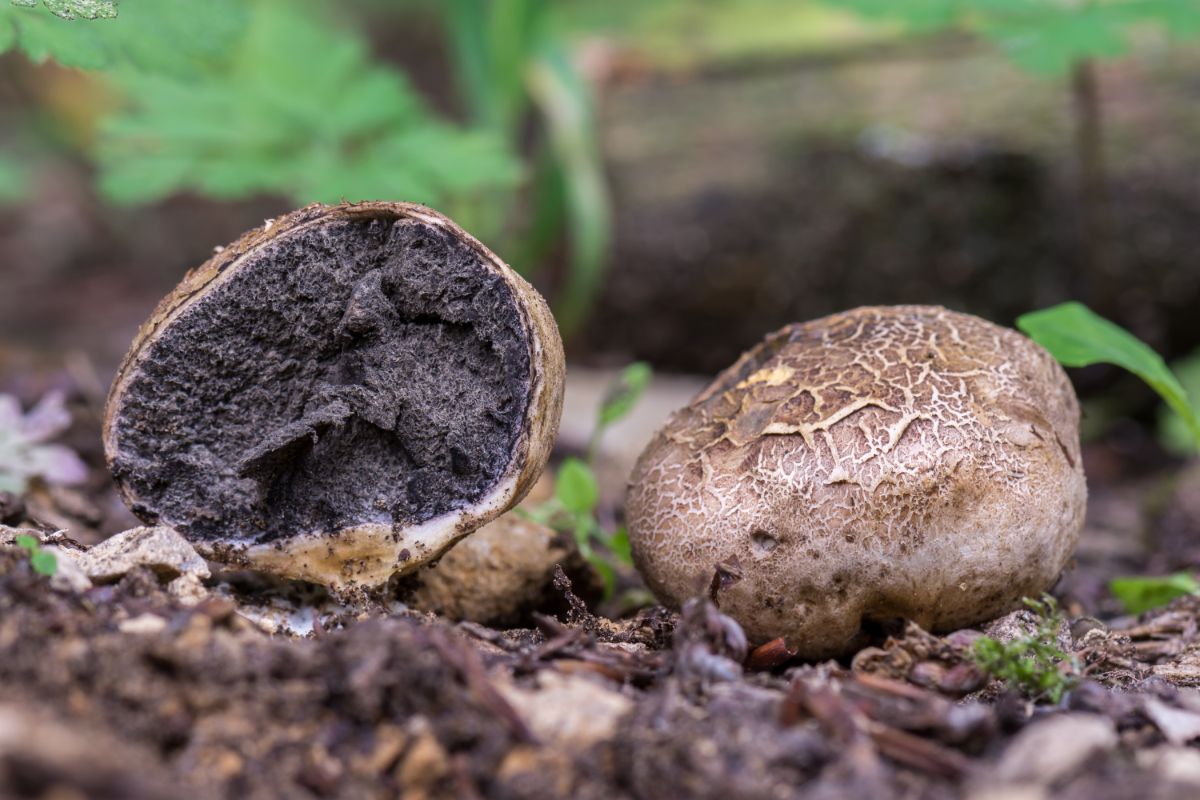
Jump to:
All About Earth Balls
There are approximately 25 species of earth balls in the world, and almost all of them occur in North America. Identifying a fungus as an earth ball is generally straightforward. However, determining which one is often impossible without a microscope. There are a few more common, distinguishable species, but other than that, and you’ll really need to dive into some myco-nerdery to figure out what you’ve found.
Earth balls are round, tough-skinned fungus balls with black or blackish insides. When you cut one open, it will not be the soft, marshmallowy white of an edible puffball species. The scientific name Scleroderma comes from the Greek: “sclera” means hard, and “derma” means skin.
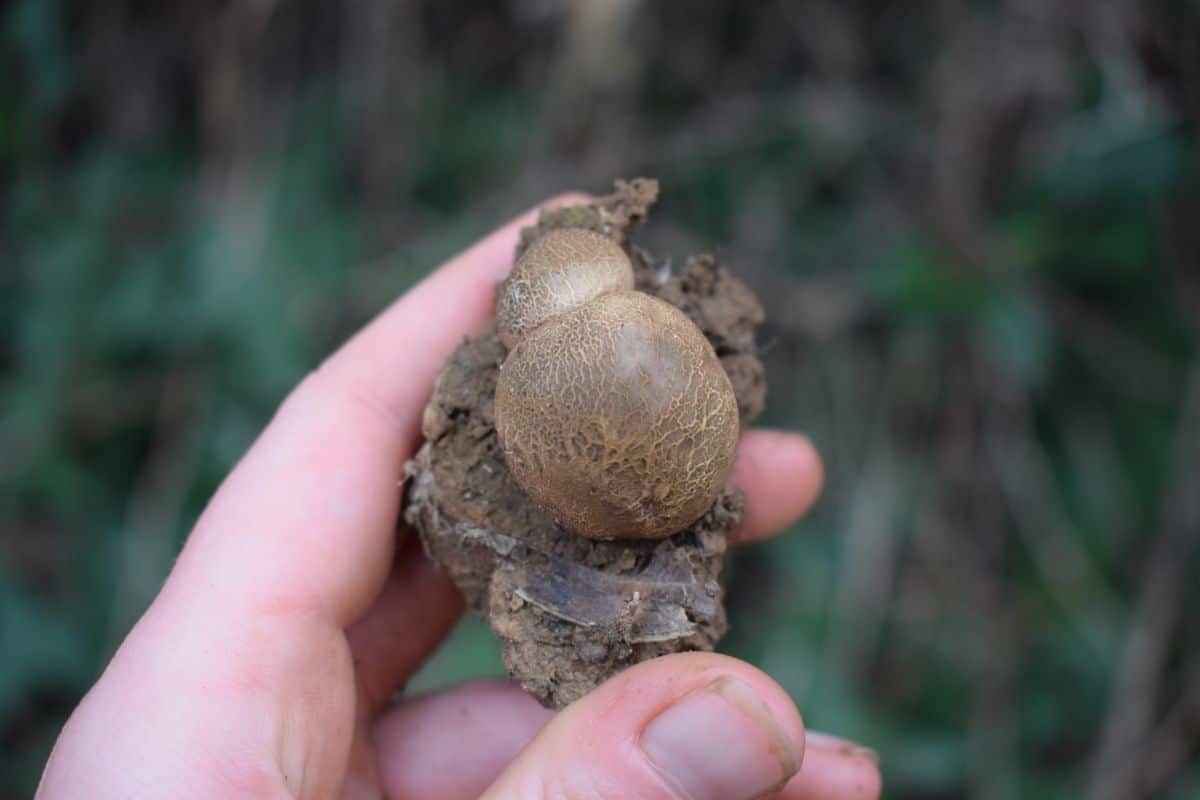
Scleroderma is also the name of a group of rare diseases that cause chronic tightening of the skin, joint pain, exaggerated response to cold (Raynaud's disease), and heartburn.
The common name earthball refers to the fact that many of these species start their lives mostly or entirely buried. As they mature, they push themselves up from the ground, often quite forcefully. However, they don’t always push themselves up entirely from the soil and remain partially buried, making them difficult to see.
Recently, DNA evidence placed these fungi in the order of Boletales, though it is hard to imagine how the two families are related. Mother Nature and evolution are fascinating!
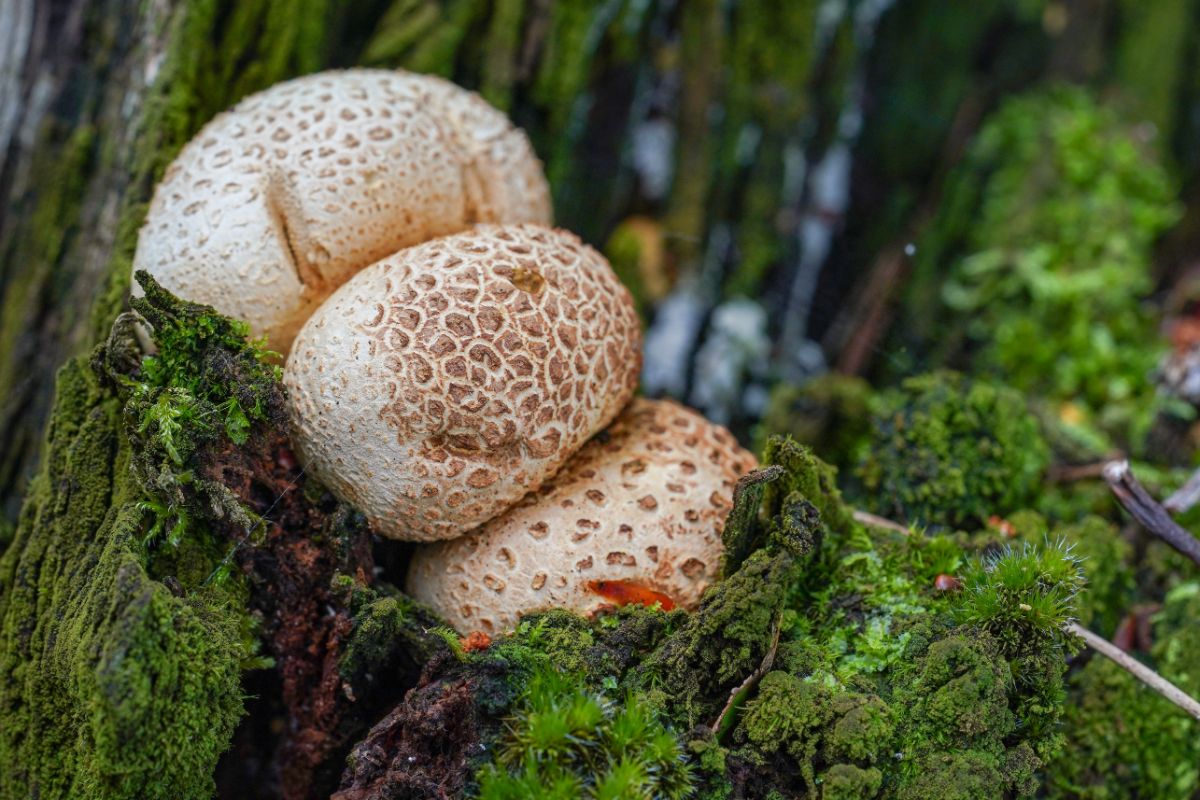
Are Earth Balls Poisonous To Kids and Pets?
Due to their small size and propensity to appear in lawns and other disturbed areas, kids and pets will run into these often. And they may be irresistible to little hands and curious pups. The good news is that earth balls aren’t poisonous in that they’ll kill you. However, they’ll probably give the ingester severe stomach pain, accompanied by nausea or other distress.
The symptoms usually pass in time, but if you know for certain your child or dog ate one of these, please seek help from the appropriate professionals (doctor or veterinarian). While it is unlikely they’ll be seriously harmed, it is essential that they be monitored, just in case.
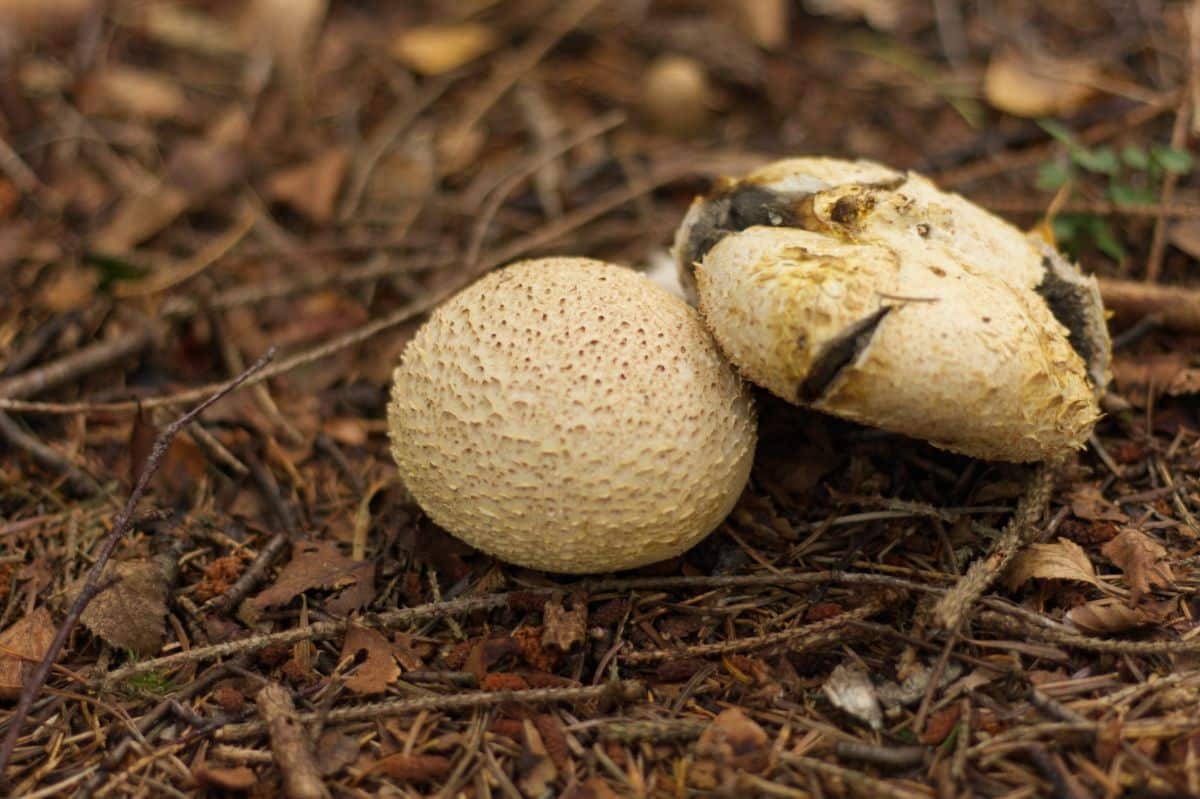
Earth Ball Fungi Identification
Season
Varies by species
Habitat
Varies but almost always grows from the ground near trees. Most species are mycorrhizal or believed to be mycorrhizal. They’re also saprophytes, so they seek out dead and decaying organic material, like rotting wood.
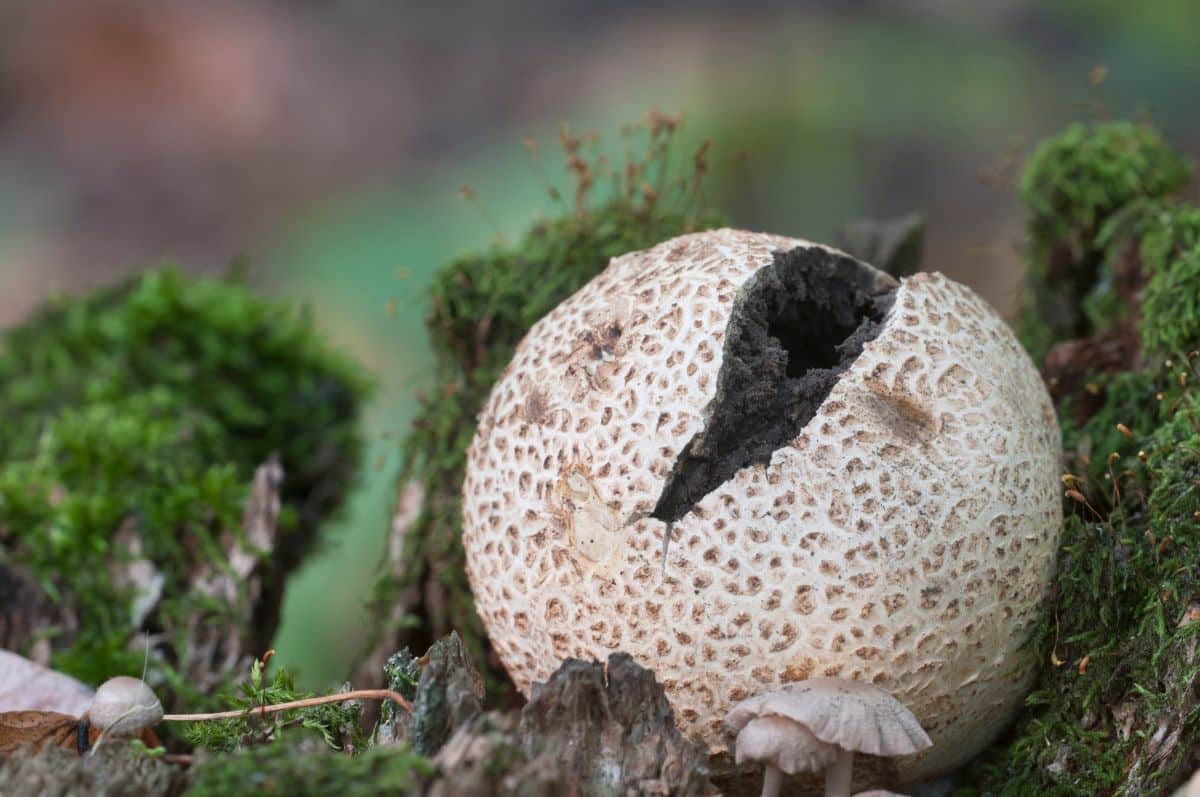
Identification
Earth ball fungi possess three key characteristics that differentiate them from other species:
- The outer skin is tough and thick.
- Their interior spore surface either starts out dark purplish-black or matures to that color. Even with ones that start out white, there is usually some staining or indication that the interior is not going to remain white.
- They are attached to their underground mycelium network through thin mycelial strands that resemble little roots.
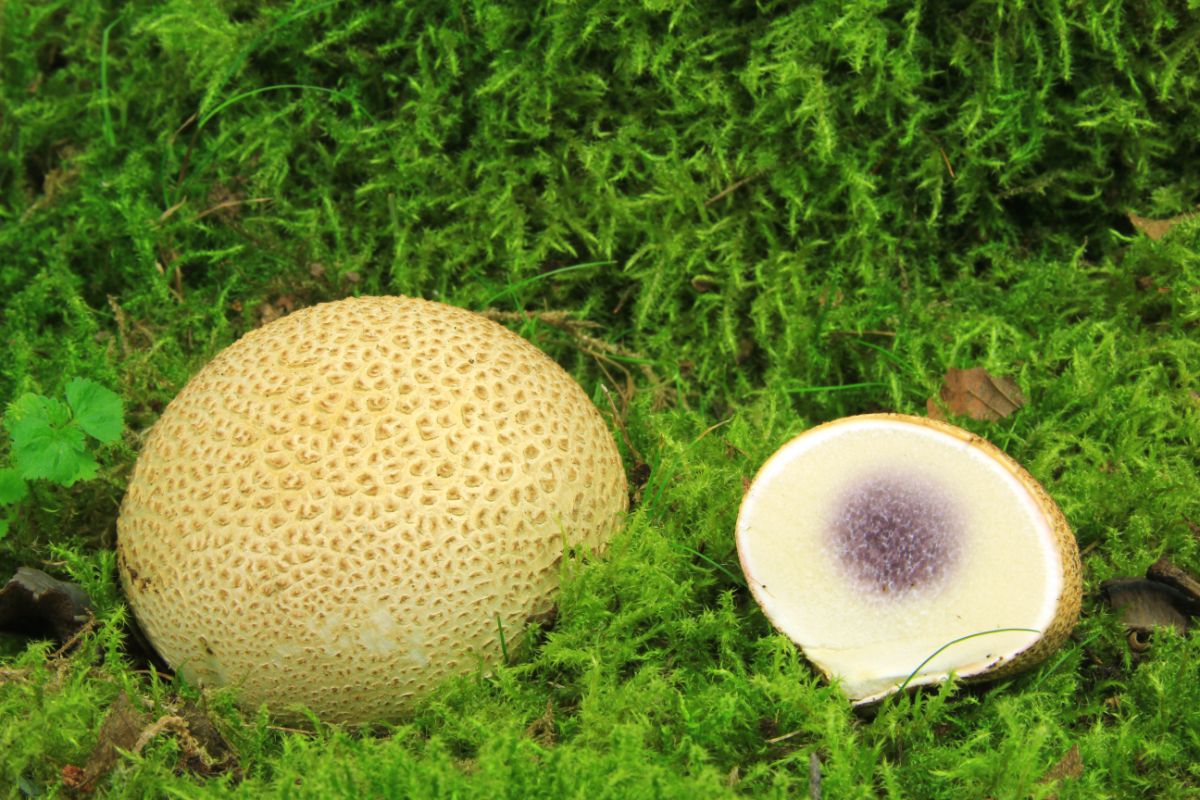
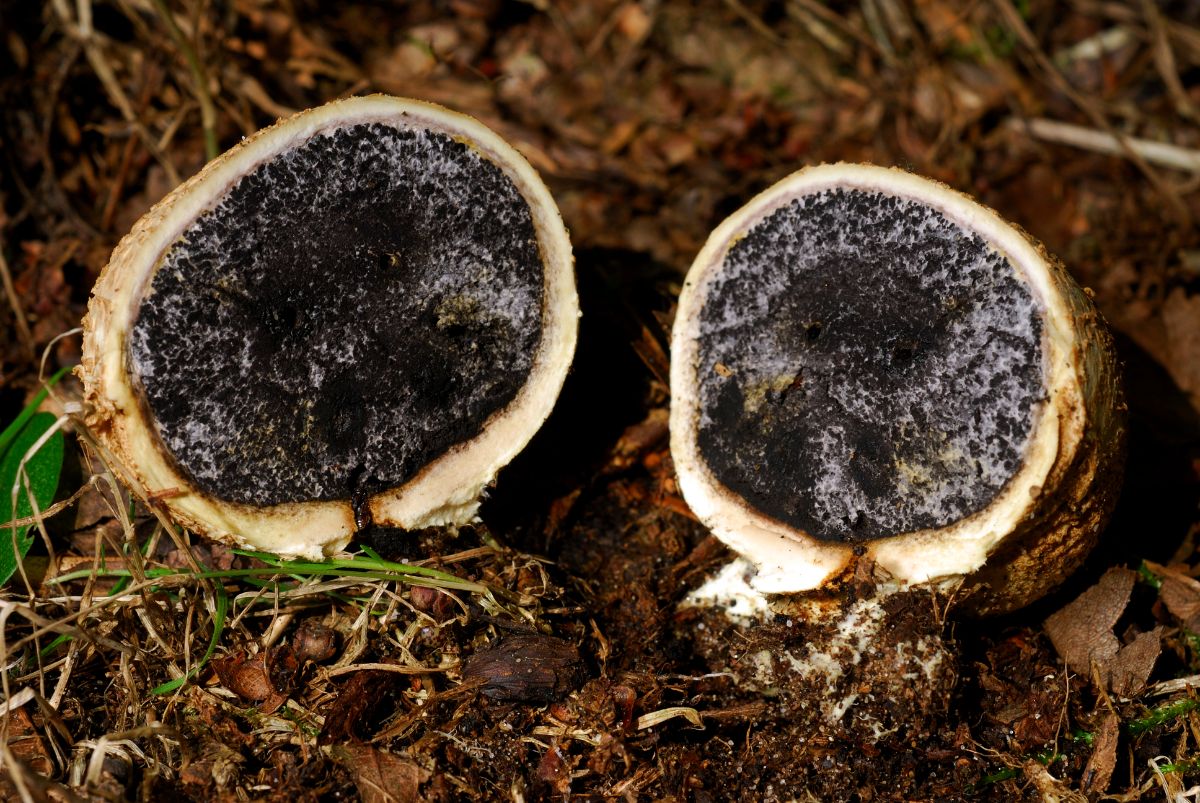
Earth Ball Fungi Lookalikes
Almost all the little puffball mushrooms look passingly like an earth-ball. They are golf-ball size or smaller, round or roundish, and grow on the ground. From outward appearances, it’s easy to assume you’ve found an edible puffball mushroom. This is soon unequivocally proven wrong with a simple slicing of the ball in half. The interior reveals whether it’s an edible species of the inedible and potentially poisonous earth ball.
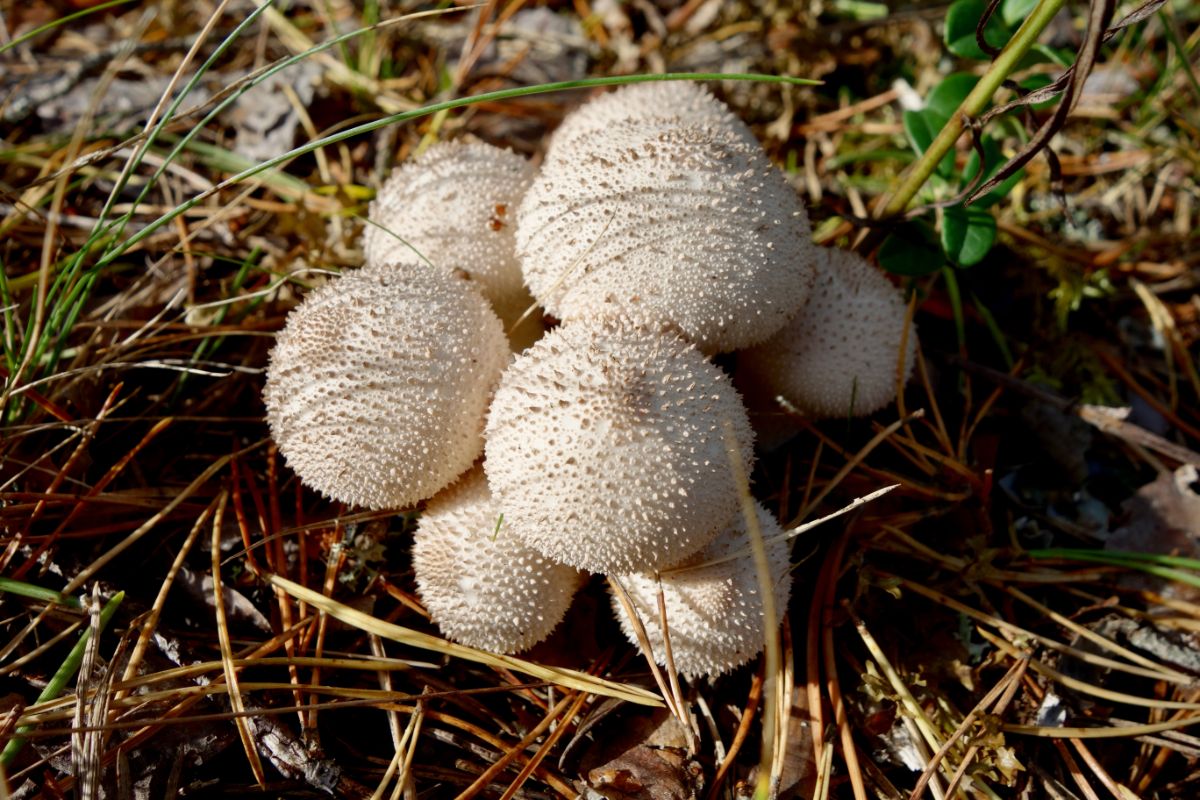
Earth balls are also commonly confused with truffles, primarily because the forager is hoping and praying it is a truffle. Again, cutting the fungus open reveals the truth.
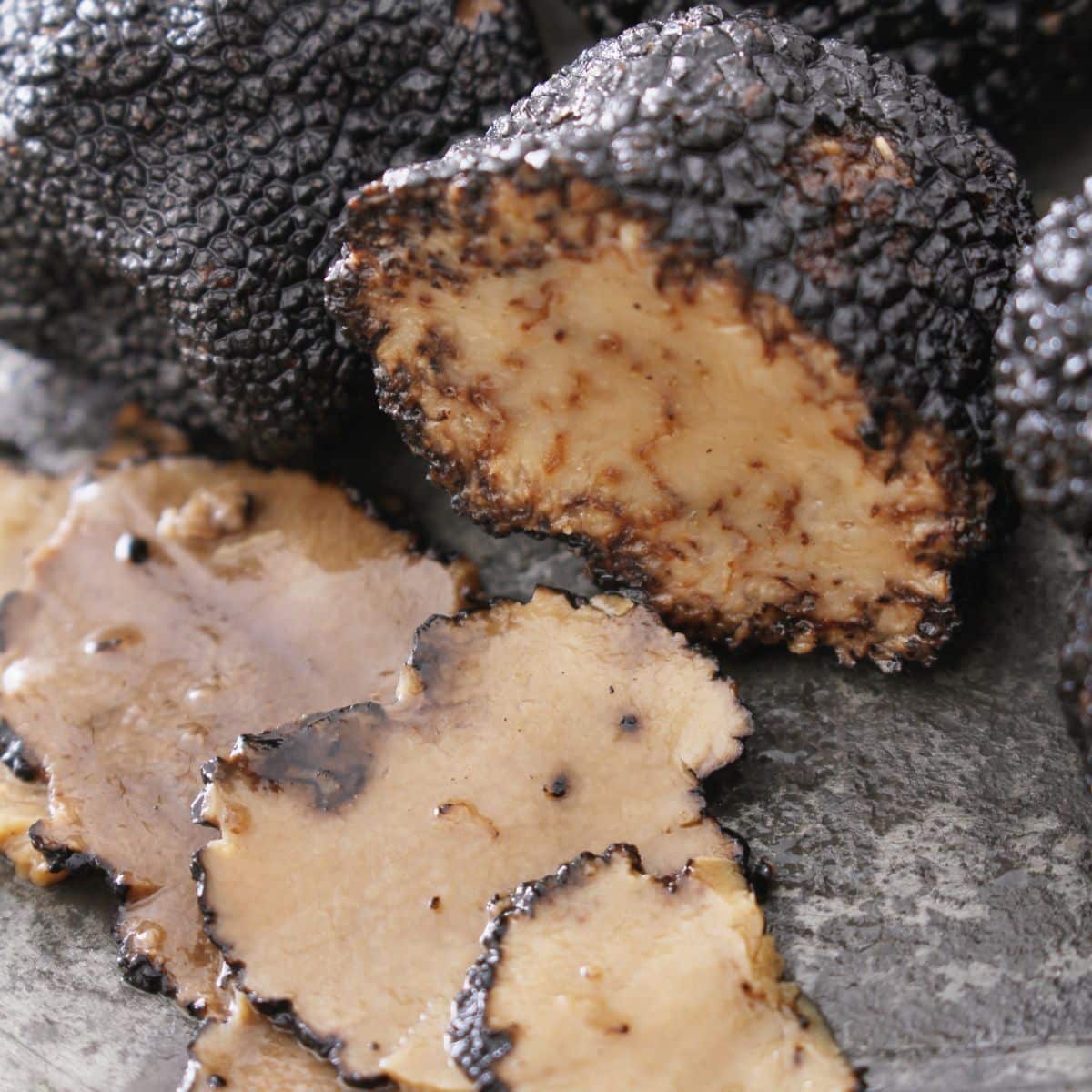
Earth Stars highly resemble earth balls and the similarity of their names makes it even more common to mix them up. Earth stars are light or dark brown, have dark spore insides, and grow from the ground. The big difference is that earth stars have a dark, thick casing which peels off and rests in segments at their base. The casing arranged around the center body looks like multiple pointed rays that extend out like a star. This arrangement gives the appearance of a ball sitting in a star-shaped nest.

Earth Ball Species in North America
This list does not represent all the earth ball fungi in North America but comprises some of the more common types.
Poison Pigskin Earthball (Scleroderma citrinum)
Also known as the common earthball or common earth ball
- Region: Widespread
- Season: Summer and fall, possibly into winter in warmer climates
- Habitat: Found in hardwood and conifer forests, growing at the base of or nearby trees. It appears singularly, in scattered groupings, or densely.
- Description: Round or slightly flattened with a tough, scaly tannish brown or lemon yellow skin (citrinum translates to citrus colored or lemon colored). The interior skin is white and, when sliced, quickly turns pinkish. The inside spore mass starts out white but soon turns dark purple to black. It is attached to mycelium underground through thin mycelial cords that look like roots. With maturity, the dense black spores turn to spore dust.
- Size: .75-4 inches wide
- Notes: Synonyms include Scleroderma aurantium and Scleroderma vulgare. This species is poisonous, causing severe gastrointestinal issues.
Fun fact: This species can be parasitized by another fungus, Pseudoboletus parasiticus, but it is rare. The parasitic mushroom only grows from the common earthball and can do so quite abundantly.
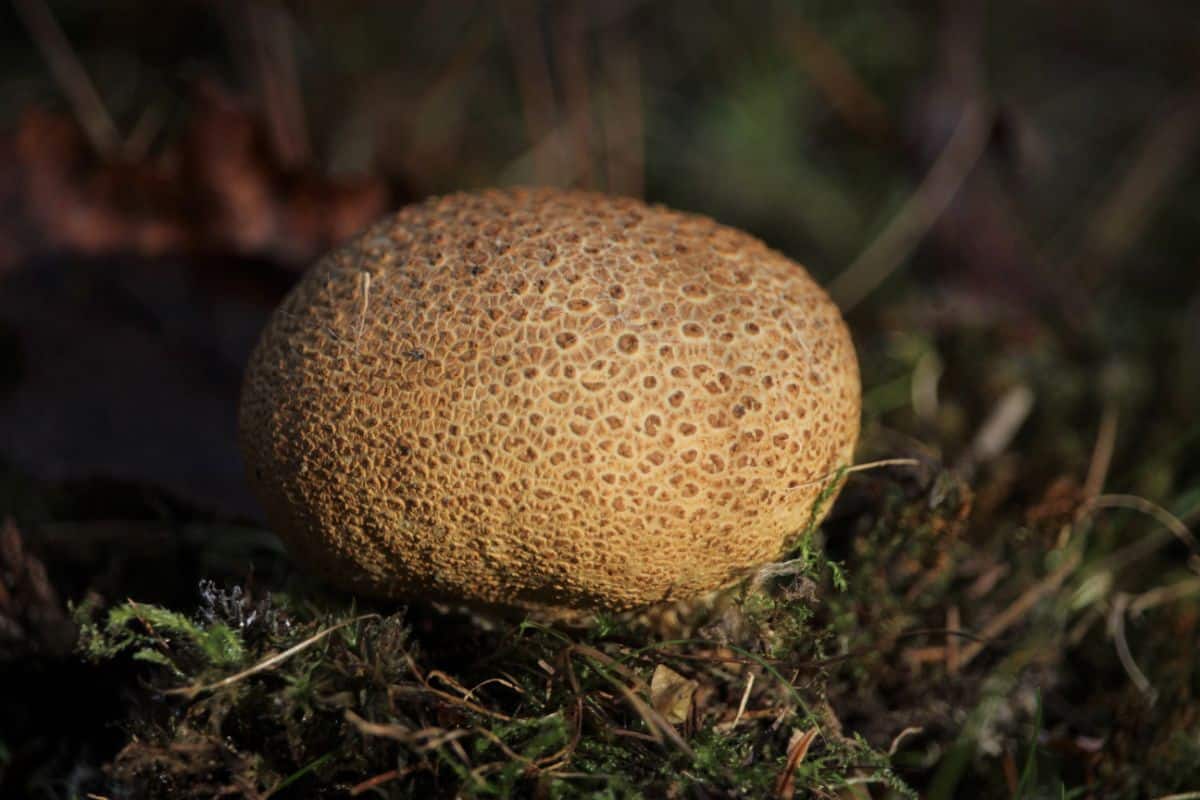
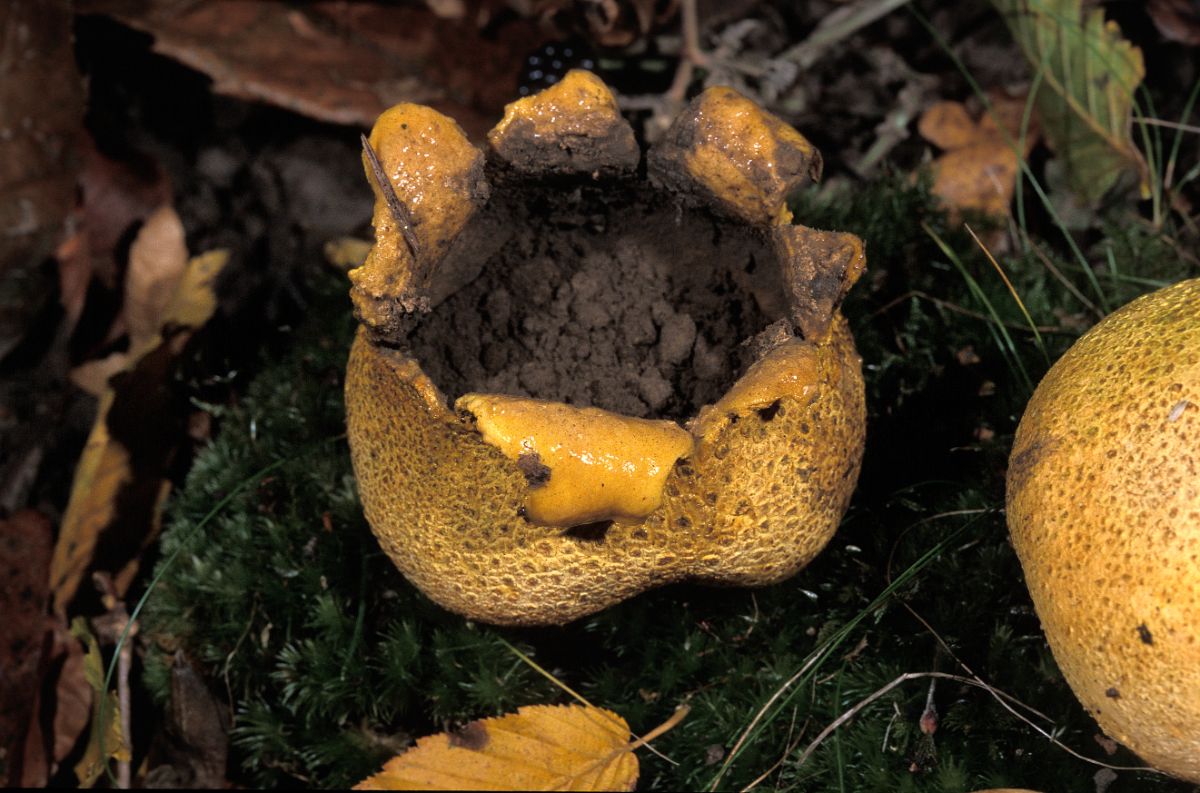
Star Earthball or Dead Man’s Hand (Scleroderma polyrhizum syn. Scleroderma geaster)
- Region: Widespread
- Season: Summer through winter
- Habitat: Loves disturbed landscapes, like lawns and landscaped areas. Will grow singularly or in groups and is most common in urban settings. It is saprobic, feeding off dead or dying organic material. It may be mycorrhizal as well.
- Description: Baseball-sized rounded balls with thick, tough, black outer skin. The surface is smooth or slightly pitted but not scaly. The outer skin is white but quickly blushes pink when cut. The interior is deep black. At full maturity, the mushroom splits open to reveal black spore dust. The skin splits open like rays or like the points on a star. Sometimes it has white mycelial strands at the base that look like roots. Star earthballs often are partially buried and usually have soil and debris attached to them when picked.
- Size: 3-5.25 inches wide
- Notes: These earthball fungi are the bane of many a homeowner. The large, tough bodies hinder (and sometimes destroy) lawnmower blades and cause ugly black patches on the lawn. They can crack asphalt driveways and invade paved tennis courts. Also commonly known as Devil’s Snuff Box, Many-Rooted Earthball, and Earthstar Scleroderma.
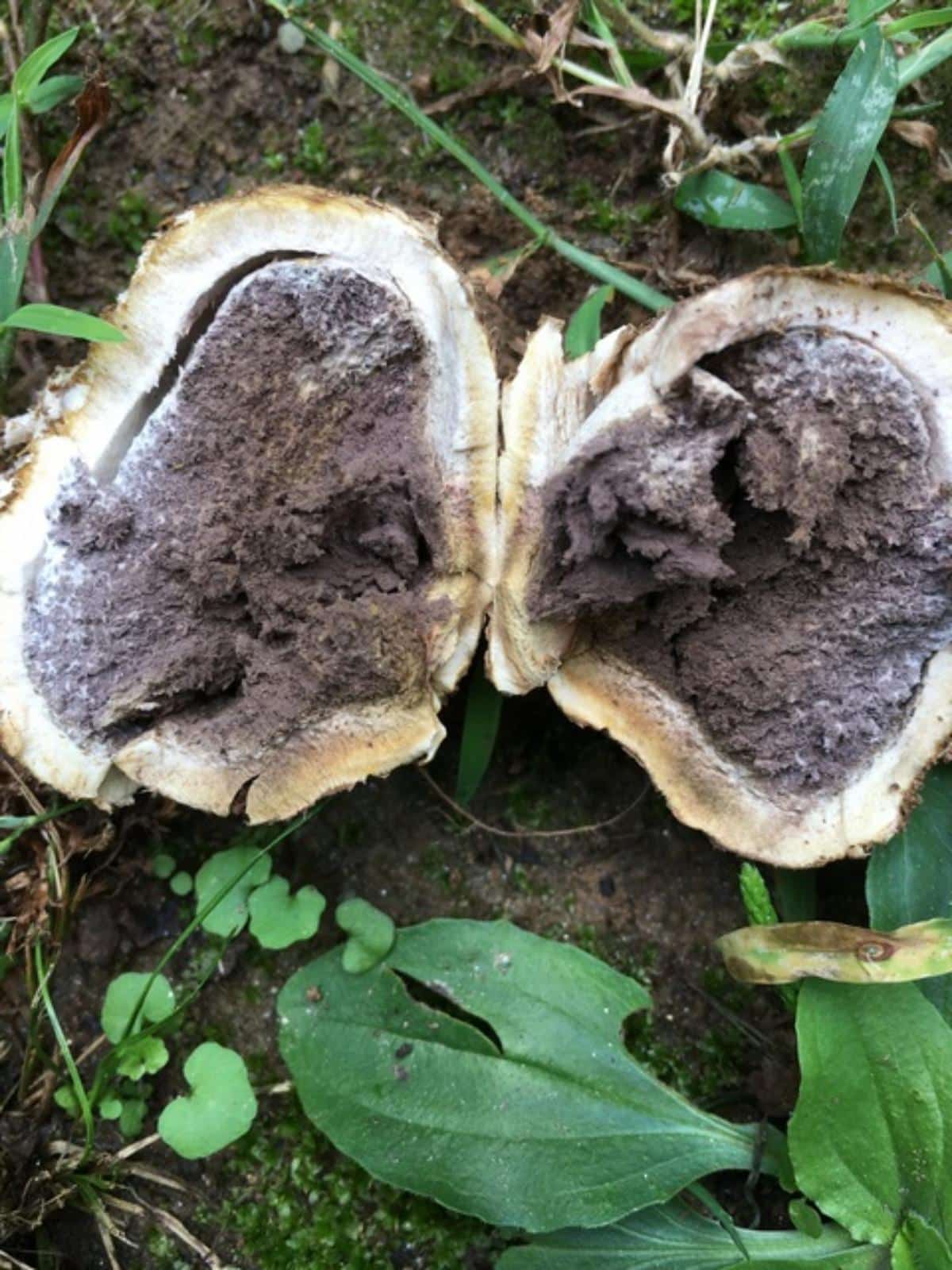
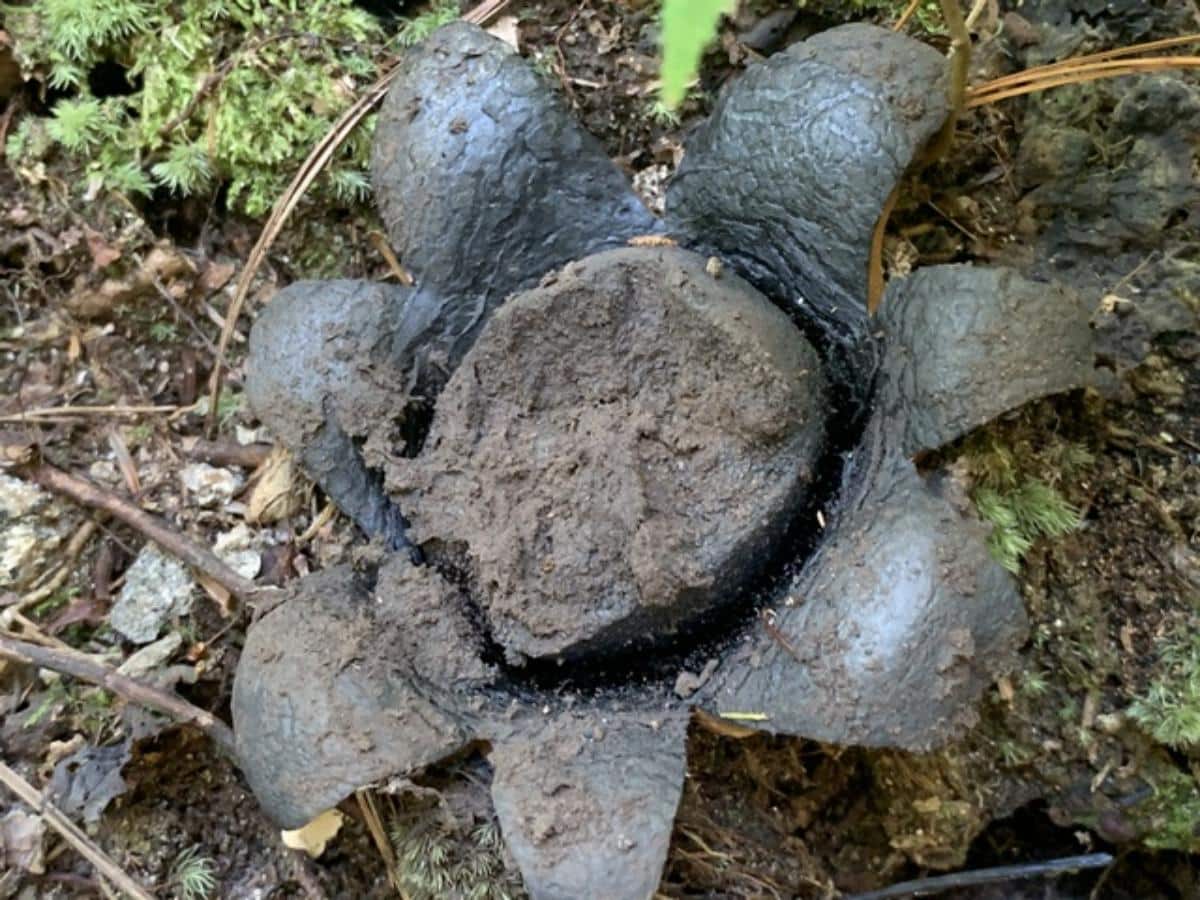
Potato Earthball (Scleroderma bovista)
- Region: Eastern North America
- Season: Fall
- Habitat: With hardwoods, possibly mycorrhizal. Grows singularly, scattered, or densely in open areas like lawns and meadows. Also found in disturbed ground but is less common.
- Description: Round, smooth, or lightly scaly tannish body. The outer skin bruises pinkish or purplish with handling. It may have a pinched stem-like stub at the base. With age, the skin develops small pinkish cracks. The interior is black and hard, then turns powdery with maturity.
- Size: .75-2 inches wide
- Notes:
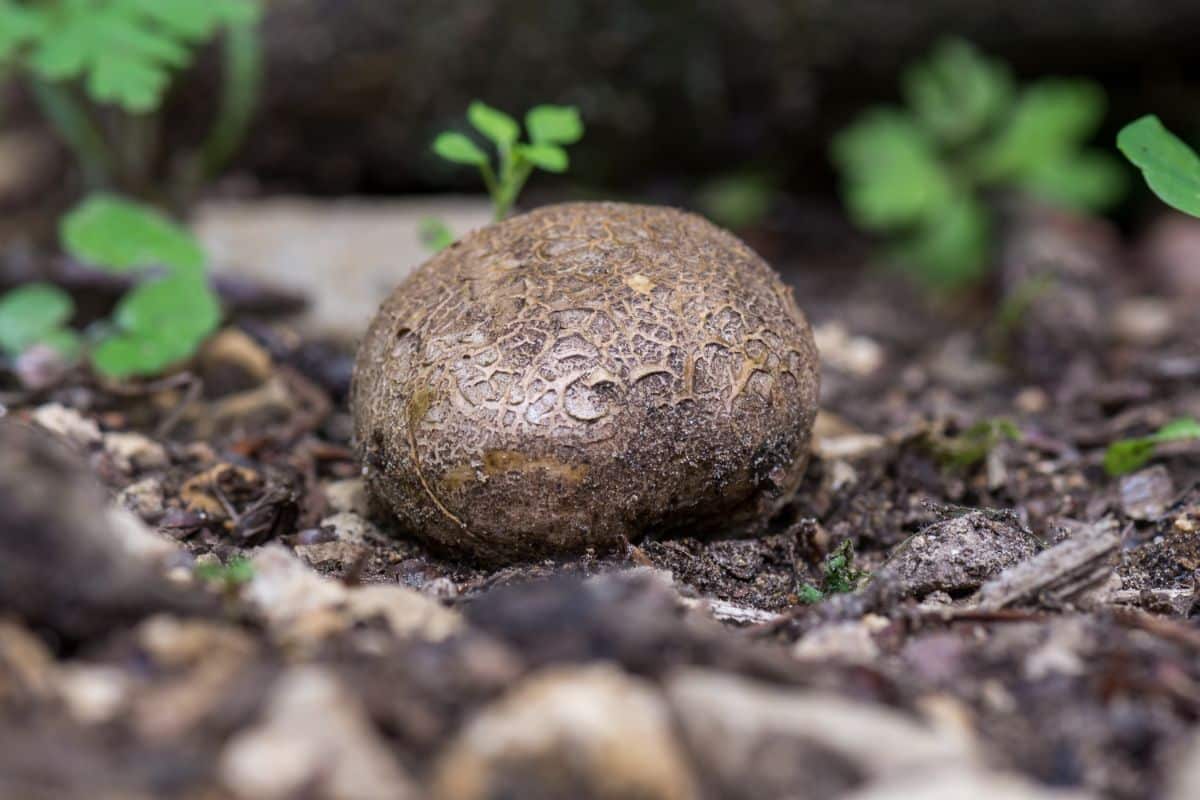
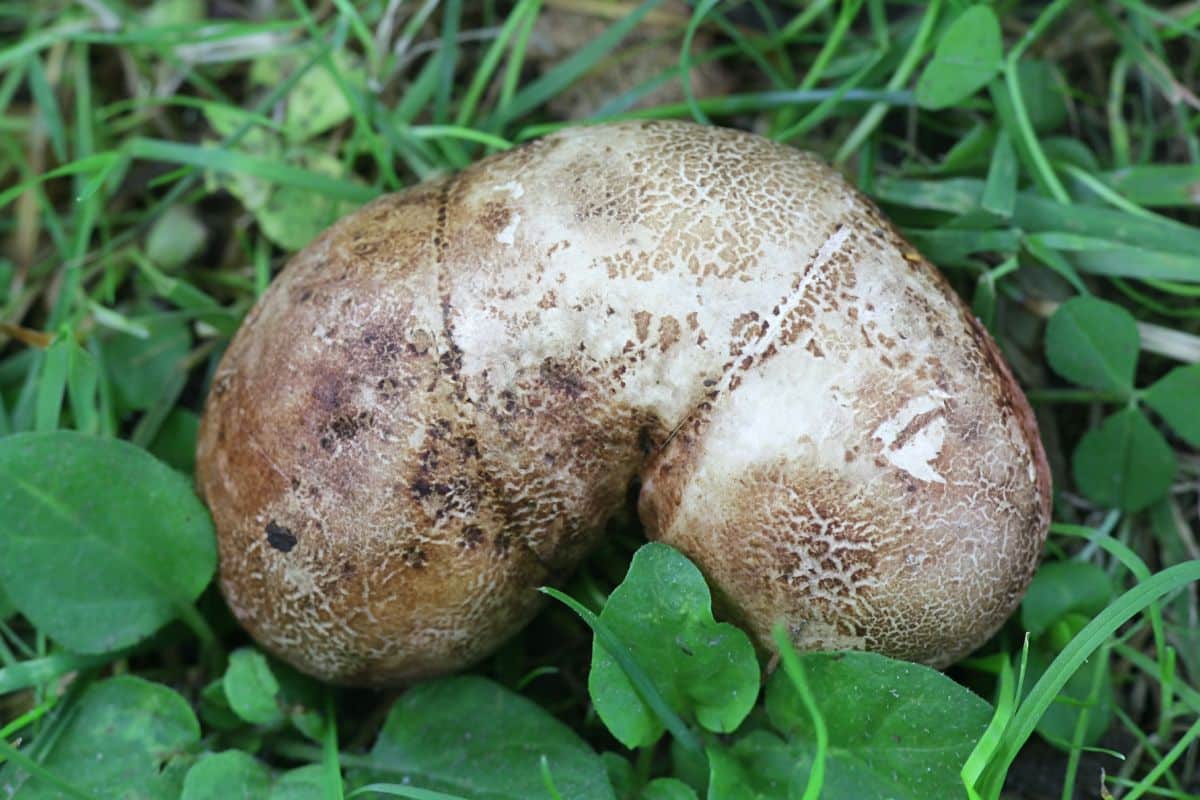
Scleroderma michiganense
- Region: Widespread east of the Rocky Mountains, reported to occur in the Southwest
- Season: Summer through fall, possibly into winter in warm climates
- Habitat: Grows with hardwoods and likes dry, sandy soil. May grow singularly, scattered, or densely grouped.
- Description: Rounded or light bulb-shaped earthball with whitish or yellowish skin. The outer skin is either smooth or covered in very small, flat, grayish scales. Outer surface bruises reddish. The interior flesh is dense and white in youth but then turns yellowish-brown and black. The pinched lower portion resembles a short, stubby stem. At the bottom are short white mycelial strands that look like roots.
- Size: 1-2.50 inches wide
- Notes: It looks much like S. citrinum but with much smaller scales.
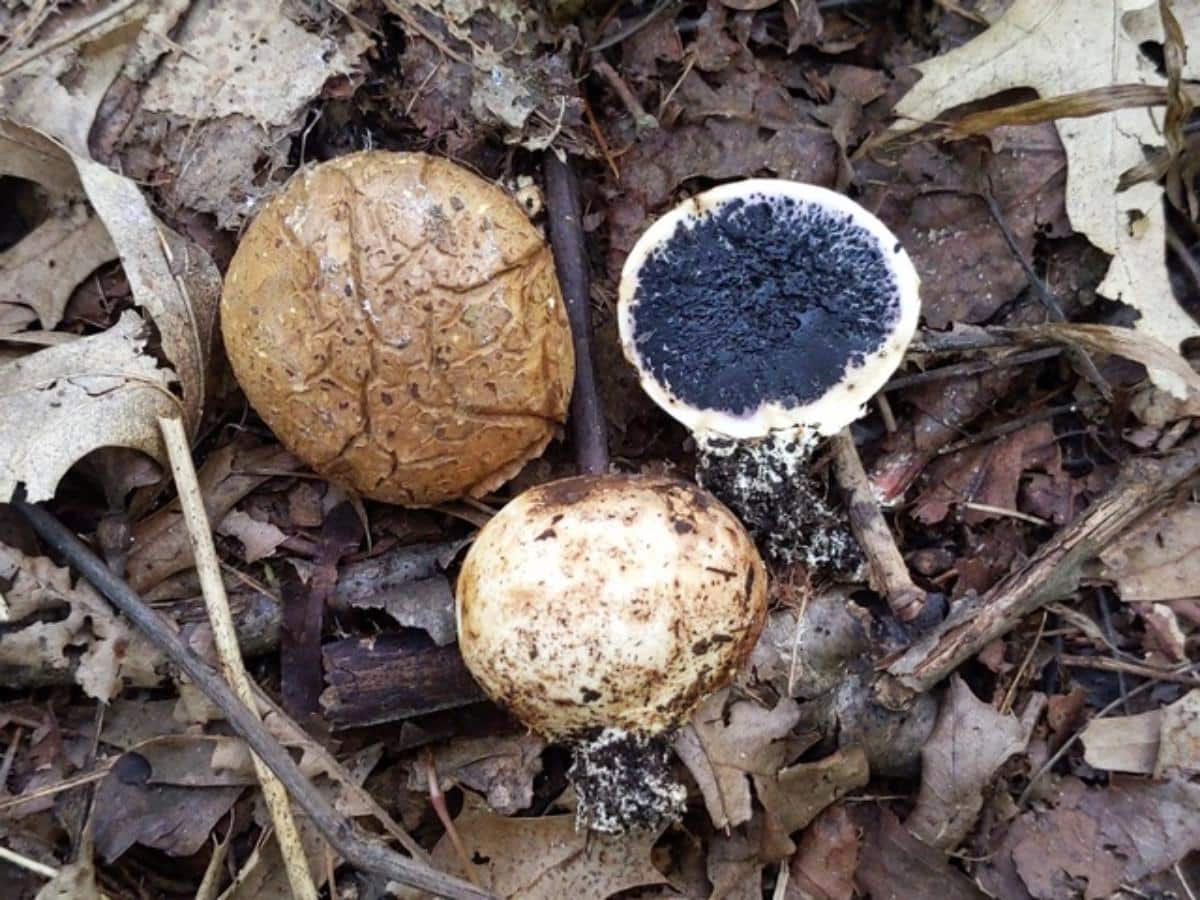
Scleroderma hypogaeum
- Region: Western North America
- Season: Summer, fall, and sometimes winter
- Habitat: Around conifers (mycorrhizal)
- Description: Rounded or irregularly round earthball with smooth whitish to yellowish skin. It may be lightly hairy in some areas. Outer skin bruises reddish or yellowish with handling. The interior flesh starts out white, then turns yellowish, and finally black. With age, the spores turn to black dust. The base may be slightly pinched, and there are short white mycelial strands that look like roots.
- Size: .25-2.75inches wide
- Notes: This earthball is commonly found underground, which is unusual among earthball species.
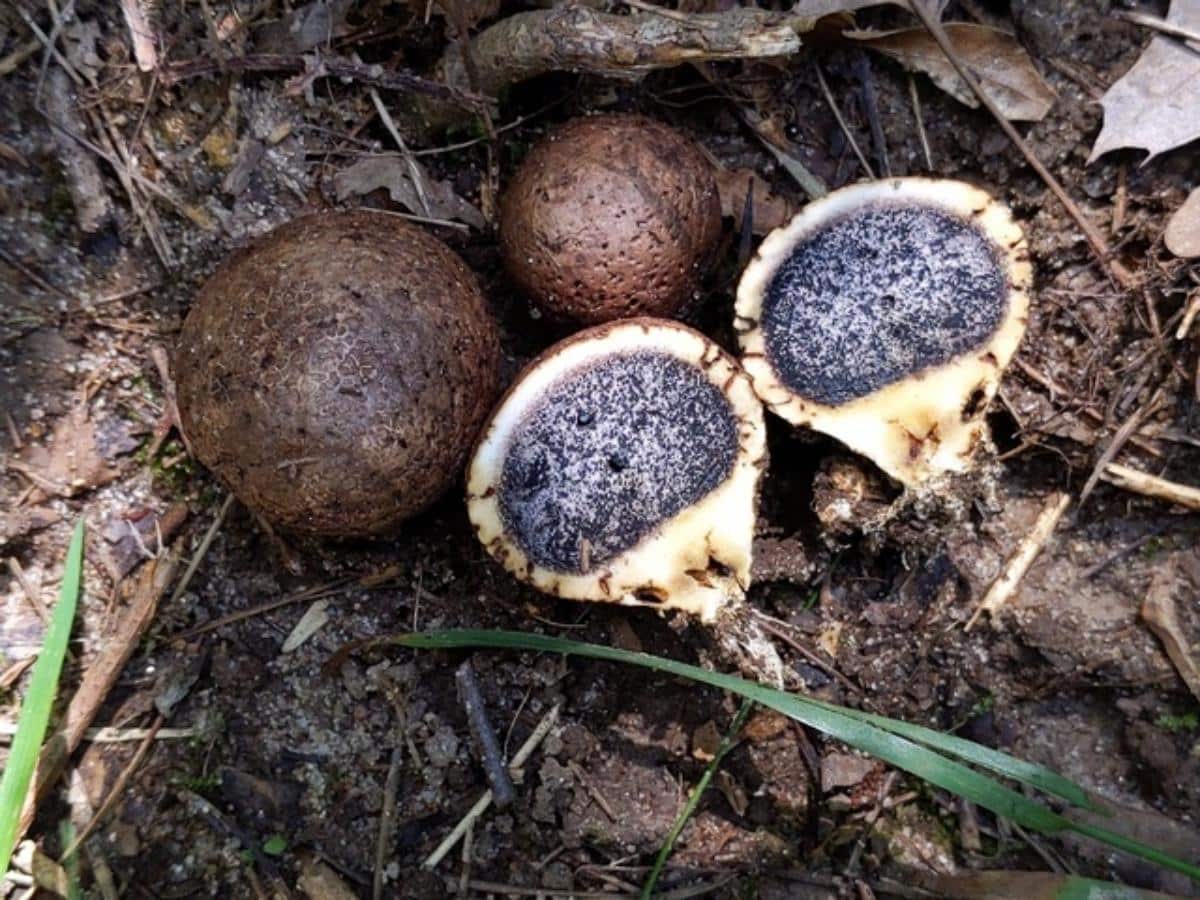
Scleroderma septentrionale
- Region: Northern North America
- Season: Summer and fall
- Habitat: Sandy soil, especially sand dunes. It grows singularly, scattered, or densely.
- Description: Rounded body with smooth, yellowish, usually mottled skin. It may have small irregular scales as well at the very top. The skin bruises dark red with handling. This earth ball species has a long, well-defined, stem-like growth at its base. This is a dense collection of whitish rhizomorphs that go deep in the ground to keep it secured in the sandy soil. The interior flesh starts out white, then turns purplish-brown. With maturity, the inside spores turn black and dusty.
- Size: .75-2.25 inches wide. The rhizomorph “stem” on this earthball can reach up to 4 inches long.
- Notes: This species closely resembles Scleroderma meridionale, but they can be differentiated by their location and “stem” color. S. septentrionale is a northern species, and the stem structure is whiteish.
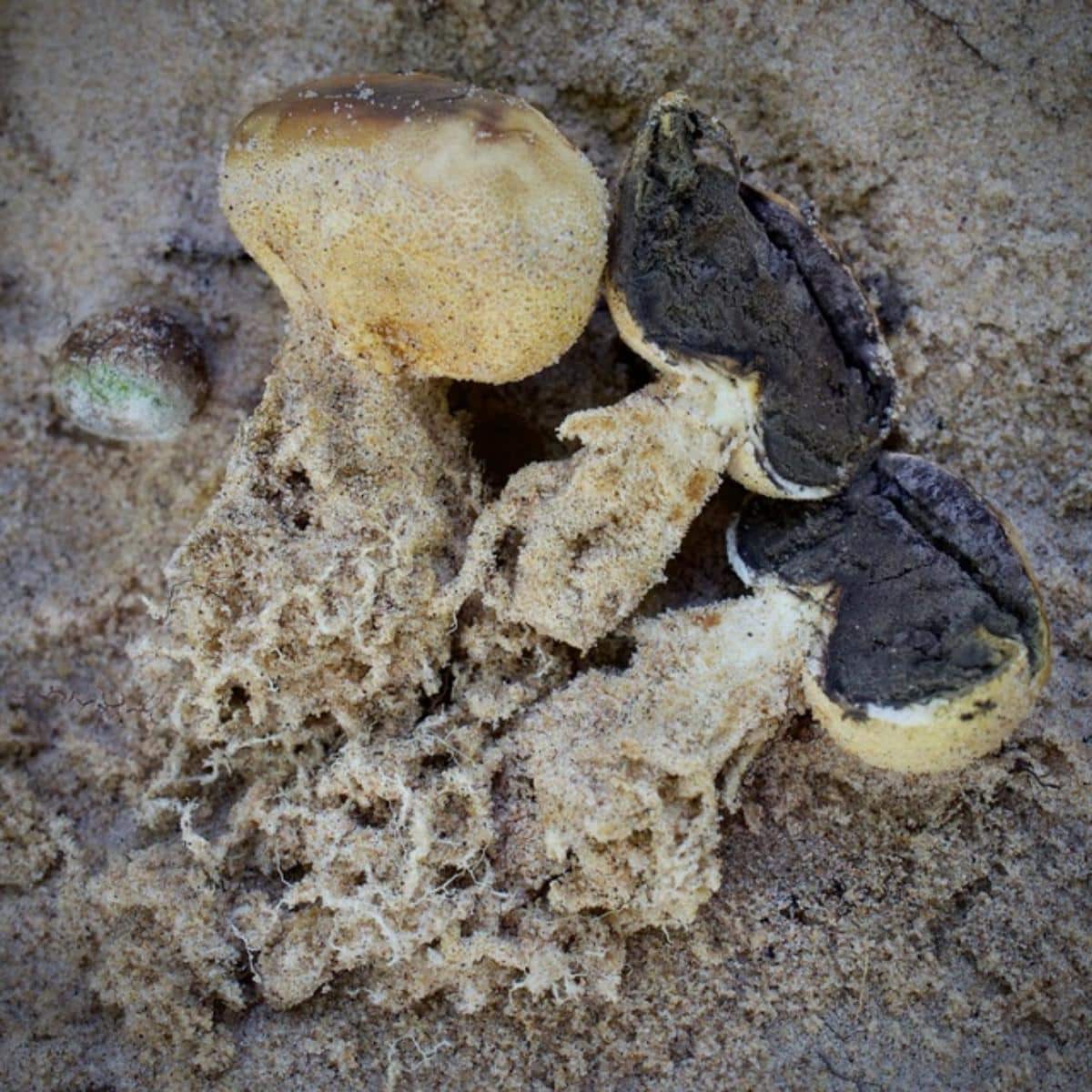
Scleroderma meridionale
- Region: Southern and southwestern North America.
- Season: Summer and fall.
- Habitat: Sandy soil, especially sand dunes. It grows singularly, scattered, or densely. Often partially buried in the sand.
- Description: Rounded or irregularly shaped body with a rough, dry, tan, or yellowish, sometimes mottled skin. The skin bruises dark red with handling. This earth ball species has a long, well-defined, stem-like growth at its base. This is a dense collection of yellowish rhizomorphs that go deep in the ground to keep it secured in the sandy soil. The interior flesh starts out white, then turns purplish-brown. With maturity, the inside spores turn black and dusty. The bodies often split into uneven lobes as they grow.
- Size: Up to 2.4 inches in diameter
- Notes:
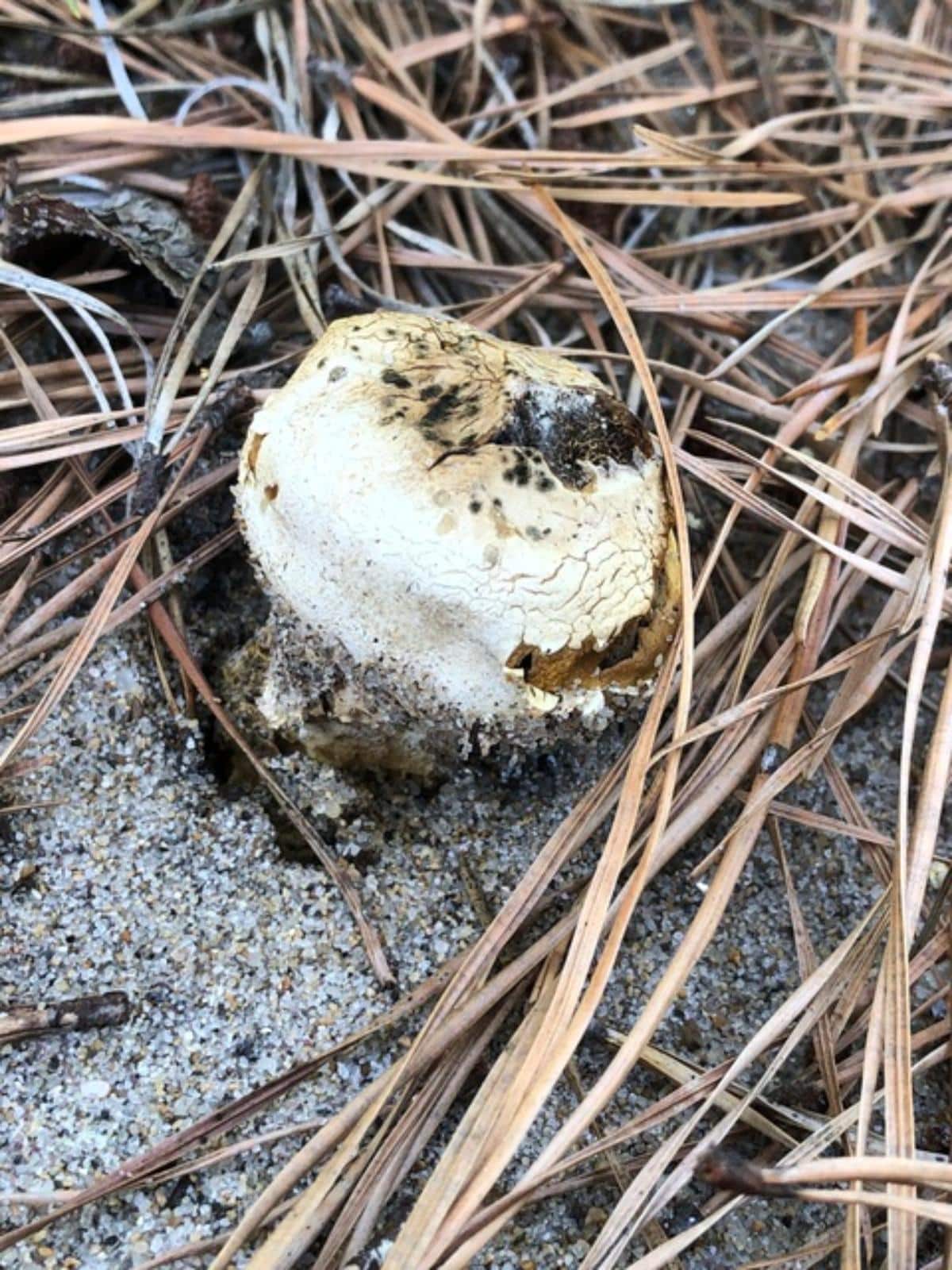
Common Questions About Earthball Fungi
How do I get rid of earth balls in my lawn?
First, how much patience do you have, and how important is it to remove them? Earthballs grow from underground mycelial networks that are quite extensive. Removing the fruiting body, the ball that you see, will prevent it from spreading spores but won’t stop more from fruiting in the same spot future.
However, removing the fruiting body is a good idea so that spores don’t spread to other uninfected areas of your lawn. Be sure to pick them young – if the inside is black and powdery, that’s prime spore dispersal time, and if you let that spread across your lawn, you’ll probably see a lot more popping up in the next few years. Collect the hard immature bodies, put them in a bag, and take them far away from your lawn. Do NOT put them in the compost!
Nothing you can do really, though, will stop them entirely besides digging up your lawn to get at the underground network. These fungi feed on dead and decaying organic material; they’re a natural part of the decaying process. And, as long as there is organic material to feed on, they’ll show up.
People report trying to prevent earthballs by sprinkling cornmeal, which absolutely doesn’t work. Others have tried bleach and gas, which may kill the fruiting bodies aboveground, but does nothing to the mycelium in the soil, so the fungi will still appear.
The truth is these unsightly fungi are likely improving the health of your soil by breaking down decaying material and generating helpful nutrients. While they aren’t the prettiest, they are serving the health of your lawn.
The upside is that these little buggers don’t stick around very long. Their life cycles are quite short, so their unsightliness isn’t permanent. Our recommendation is to accept them as part of the natural world; they’re not hurting anything and, in fact, are helping. Also, it might be time to reevaluate the importance of a pristine lawn.


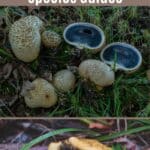
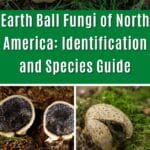


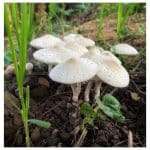
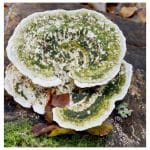
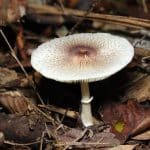
Leave a Reply